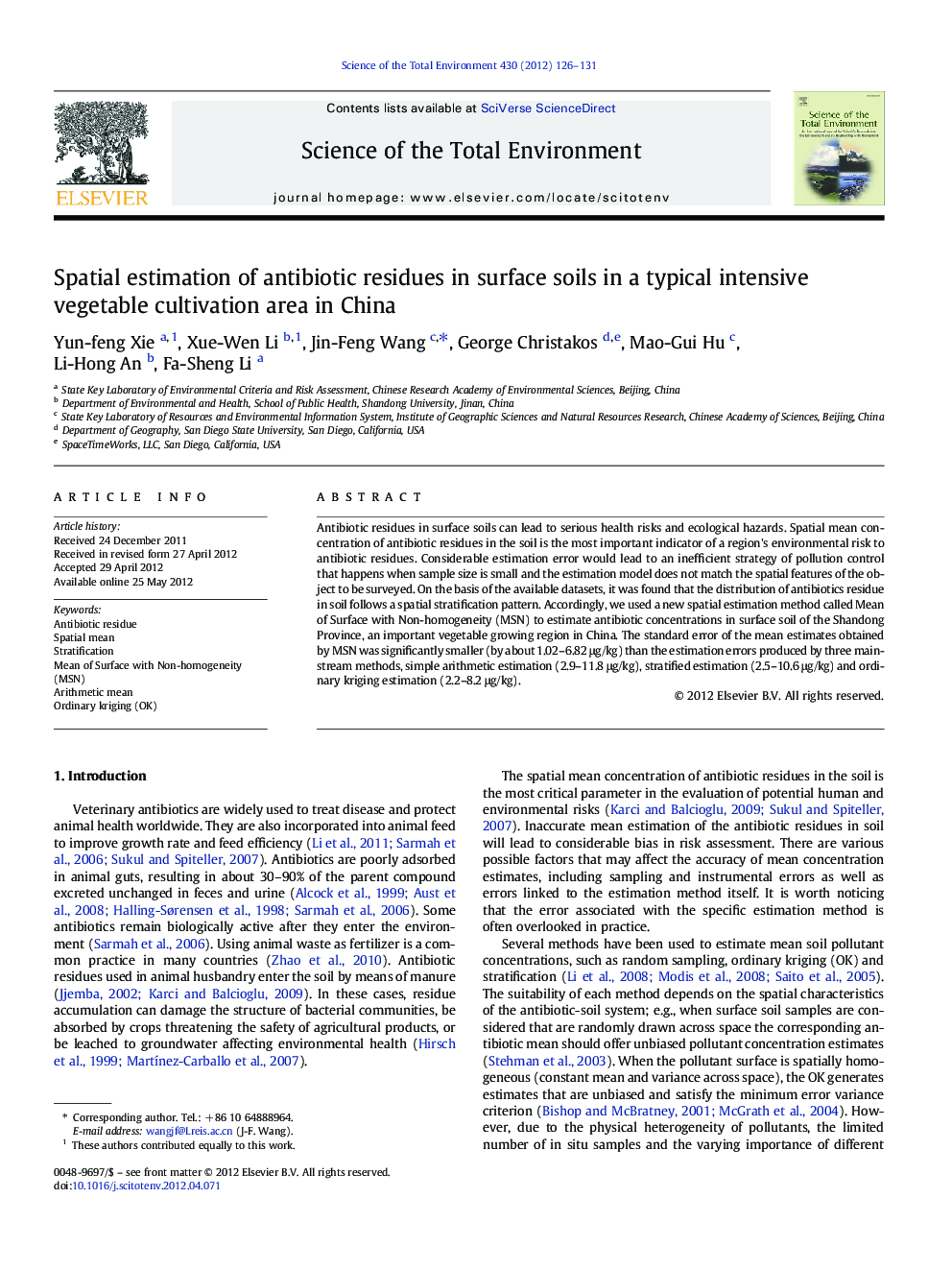| Article ID | Journal | Published Year | Pages | File Type |
|---|---|---|---|---|
| 4429355 | Science of The Total Environment | 2012 | 6 Pages |
Antibiotic residues in surface soils can lead to serious health risks and ecological hazards. Spatial mean concentration of antibiotic residues in the soil is the most important indicator of a region's environmental risk to antibiotic residues. Considerable estimation error would lead to an inefficient strategy of pollution control that happens when sample size is small and the estimation model does not match the spatial features of the object to be surveyed. On the basis of the available datasets, it was found that the distribution of antibiotics residue in soil follows a spatial stratification pattern. Accordingly, we used a new spatial estimation method called Mean of Surface with Non-homogeneity (MSN) to estimate antibiotic concentrations in surface soil of the Shandong Province, an important vegetable growing region in China. The standard error of the mean estimates obtained by MSN was significantly smaller (by about 1.02–6.82 μg/kg) than the estimation errors produced by three mainstream methods, simple arithmetic estimation (2.9–11.8 μg/kg), stratified estimation (2.5–10.6 μg/kg) and ordinary kriging estimation (2.2–8.2 μg/kg).
► The distribution of antibiotic residues in soil follows a spatial stratification pattern. ► MSN can improve the accuracy of spatial mean estimation of antibiotic residues in soil. ► MSN can be used to minimize the sample size required for antibiotic residues investigation.
